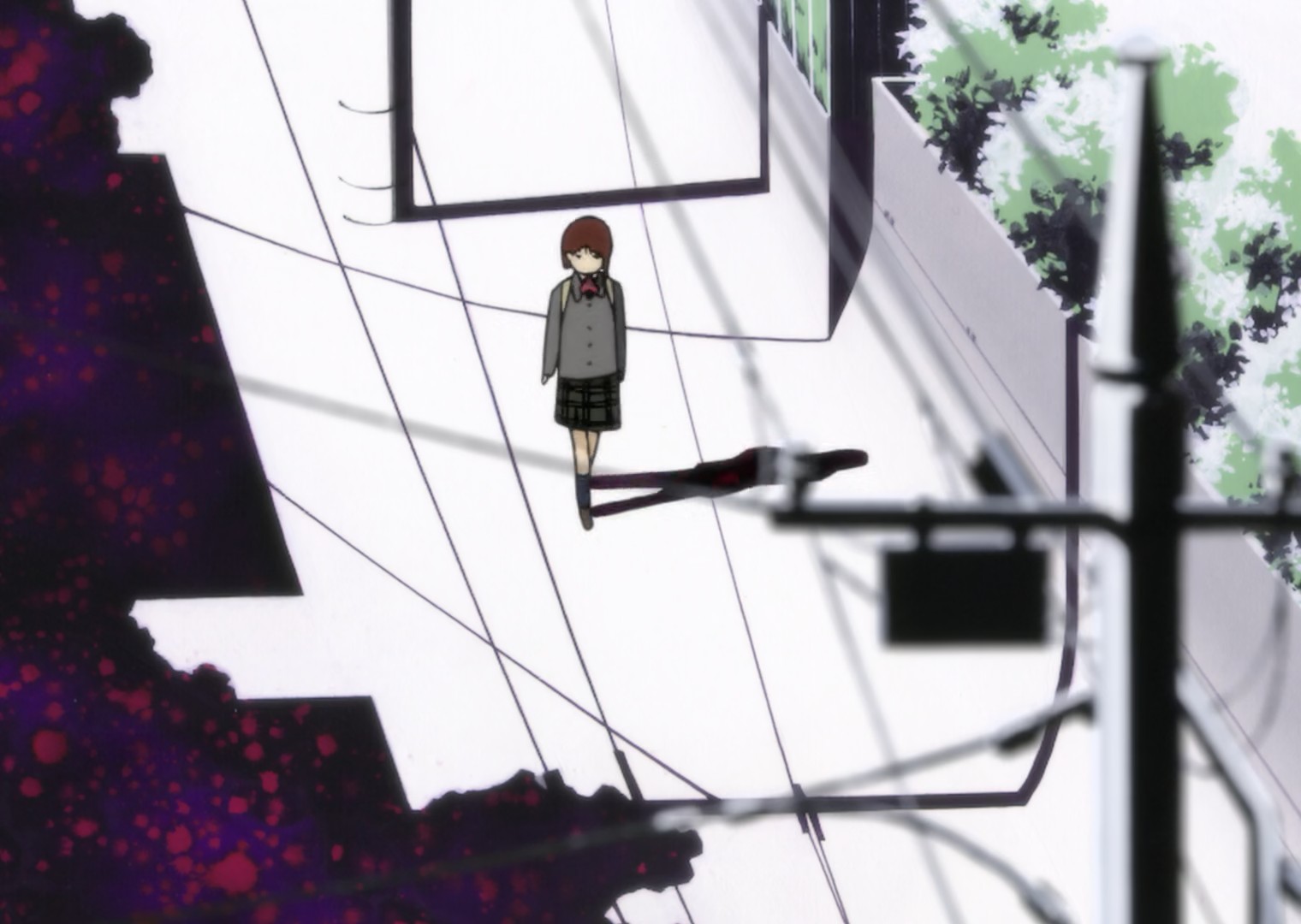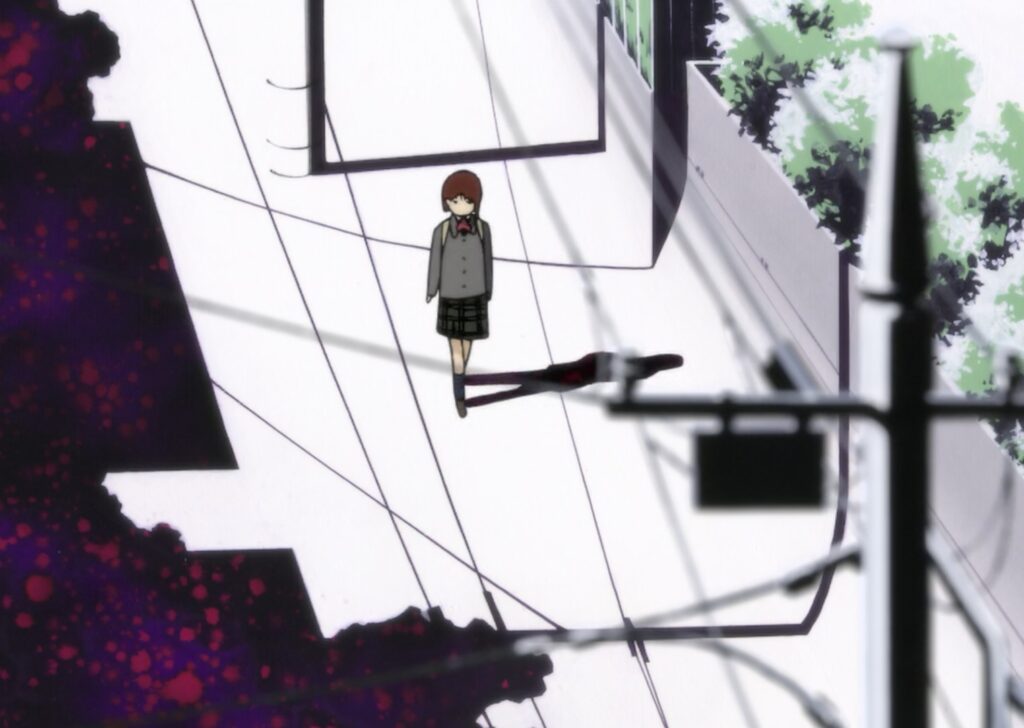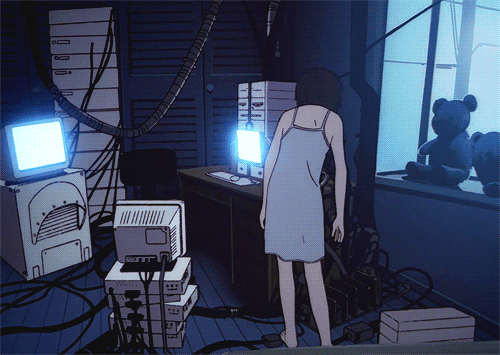Welcome, fellow tech enthusiasts and anime aficionados! Today, let’s delve deeper into the mind-bending world of Serial Experiments Lain—an anime series that has fascinated and perplexed audiences since its debut in 1998. Combining philosophical musings with cyberpunk aesthetics, Serial Experiments Lain is a thought-provoking journey into the intersection of technology, identity, consciousness, and the blurred boundaries of reality. Let’s break down the intriguing technological and philosophical aspects of this cult classic and examine its relevance in today’s digital world.
The Wired: A Proto-Metaverse
At the heart of Serial Experiments Lain lies a central theme: the relationship between humans and technology, most notably through the concept of the “Wired.” The Wired is a virtual world—a proto-metaverse—that parallels the real world, resembling the internet but with much more profound implications. It’s a place where individuals can connect, communicate, and even transcend their physical limitations. In a way, the Wired predicted the rise of modern internet culture, social media, and virtual realities (VR), while hinting at future technologies like the metaverse that we see companies like Meta (formerly Facebook) and others now pursuing.
Lain Iwakura, the protagonist, becomes increasingly entangled in the Wired as she questions her identity and the boundaries between the virtual and the physical worlds. The Wired isn’t just a digital realm; it is a reflection of the human subconscious, a place where the lines between self and other, reality and illusion, become increasingly difficult to discern.
The series predicted the growing importance of online worlds in human interaction decades before the rise of platforms like Facebook, Twitter, and virtual ecosystems such as Second Life or VRChat. It subtly suggests that as technology evolves, so too does the way we perceive and define our existence.
Technology as an Extension of the Self
In Serial Experiments Lain, technology is not just a tool—it’s an extension of the human self. Lain’s NAVI (a futuristic, personalized computer system akin to modern laptops and smartphones) becomes her gateway into the Wired, enabling her to explore and interact with different layers of reality. As she becomes more immersed in the Wired, her identity begins to fragment. She exists simultaneously in multiple realities, raising questions about how much of our identity is defined by our presence in the virtual world.
The series brilliantly tackles this issue by showing how Lain’s digital self begins to influence her physical existence. This mirrors contemporary issues like the way social media alters our self-perception. In a time where influencers craft elaborate online personas and the line between “real life” and “digital life” is increasingly blurred, Serial Experiments Lain feels more relevant than ever.
Consider how today we present curated versions of ourselves through social media. Our online profiles can influence how others see us, but they can also alter how we see ourselves. This duality is at the core of Lain’s struggle—where does her real identity end, and where does her digital one begin? It’s a dilemma that many of us face in the digital age.
The Power of Connectivity and Disconnection
As the story progresses, Lain’s exploration of the Wired brings her face-to-face with questions of connectivity. Is the constant interconnection offered by the Wired liberating, or does it come at the cost of something deeper—such as individual autonomy, privacy, and emotional well-being?
This theme is eerily prescient given today’s debate over internet addiction, the effects of social media on mental health, and our increasing reliance on digital devices. While the Wired offers the ability to transcend physical limitations and be everywhere at once, it also fosters isolation. Lain’s immersion in the Wired pulls her away from her family and leads her to question the nature of her relationships, paralleling real-world concerns about how our dependence on technology can drive us apart even as it brings us closer together.
In a modern context, this can be compared to the loneliness epidemic driven by hyper-connectivity. Studies have shown that despite being more connected than ever, many people today report feeling more isolated, lonely, and alienated. Serial Experiments Lain seemed to foresee this paradox decades before the phenomenon became widely recognized.
Memory, Identity, and the Digital Mind
One of the most compelling elements of Serial Experiments Lain is its examination of memory and identity, particularly how they can be altered or even overwritten by technology. In the Wired, it becomes possible to manipulate memories, erasing or rewriting them at will. This raises profound questions about what makes us human. Are we defined by our memories and experiences, or can we be rewritten like computer code?
This has interesting parallels with emerging technologies such as neural implants, brain-computer interfaces, and discussions about digital consciousness. With companies like Neuralink exploring ways to connect human brains to the internet and the potential for uploading consciousness being a hot topic of debate, Serial Experiments Lain feels ahead of its time. It touches on the concept of “digital immortality”—the idea that a person could transcend death by uploading their mind to a digital network.
The show challenges the idea of self and continuity. Lain’s fluctuating identity, coupled with the manipulation of her memories, mirrors discussions around AI and how we might one day create digital versions of ourselves. In a time when avatars, AI chatbots, and deepfake technologies can simulate human personalities, Serial Experiments Lain seems like a visionary take on the future of identity.
Alienation and the Search for Connection in a Digital Age
Serial Experiments Lain is not only a technological exploration but also a psychological one. It delves deeply into the human psyche, tackling themes of alienation, loneliness, and the search for meaning in a world where digital interactions replace face-to-face relationships. Lain’s journey is, in part, a quest for connection—not just with others but also with herself. As she navigates the Wired, she searches for a place where she truly belongs, a quest that echoes many people’s experiences in today’s increasingly digital, fragmented world.
Through Lain, the series explores the emotional and psychological impact of a society saturated with technology. How much of our sense of self is determined by external connections? Can true human connection be found in a virtual world? The series doesn’t provide easy answers but instead invites viewers to grapple with these questions in an increasingly digital reality.
In the 2020s, where online forums, virtual communities, and social media are often our primary ways of interacting, Lain’s struggle is more relatable than ever. The feeling of alienation in the face of overwhelming technological connectivity is something many of us experience as we navigate both real and virtual spaces.
Legacy and Influence: Still Relevant Today
Serial Experiments Lain remains a groundbreaking work for its avant-garde storytelling, philosophical depth, and prescient exploration of technology. Its visual style and themes have influenced not only other anime but also cyberpunk media, sci-fi literature, and philosophical discussions on technology and consciousness. The show continues to captivate new audiences who find its explorations of digital identity and technology eerily applicable to the world we live in today.
As we witness the rapid evolution of virtual and augmented realities, brain-computer interfaces, and the merging of human consciousness with digital systems, the questions posed by Serial Experiments Lain become increasingly relevant. The series was ahead of its time in predicting the dilemmas we face as individuals and as a society, making it essential viewing for anyone interested in the intersection of technology, identity, and the future of human interaction.
Join the Conversation
If you’re intrigued by the themes discussed here and want to engage with like-minded fans, be sure to check out the Serial Experiments Lain group here on Absurd.link. Join the conversation and explore the fascinating world of this iconic anime series alongside other fans who are just as captivated by its exploration of technology, identity, and the human psyche.
Serial Experiments Lain is more than just an anime series; it’s a visionary exploration of the increasingly blurred lines between reality and virtuality, technology and humanity. Its relevance continues to grow as we march further into the digital age, making it a must-watch for anyone fascinated by the profound questions that arise at the intersection of consciousness, memory, and technology.












